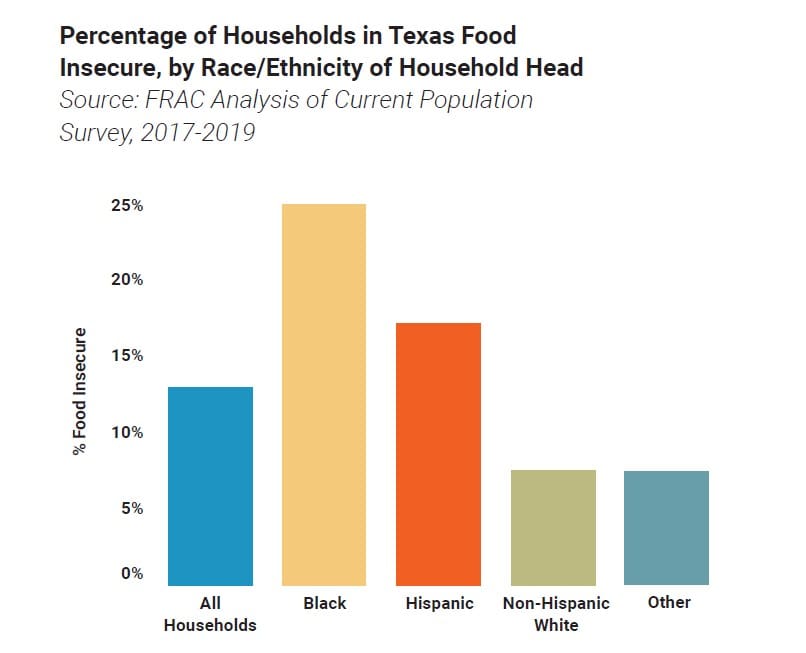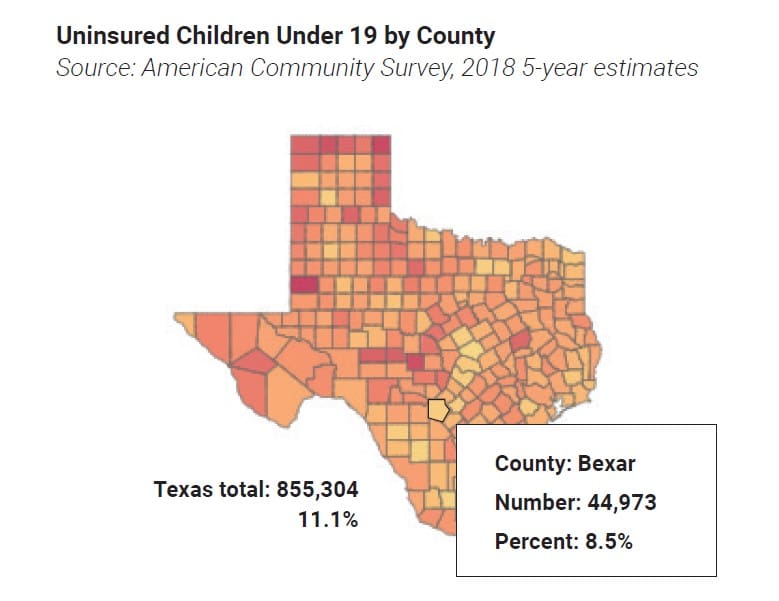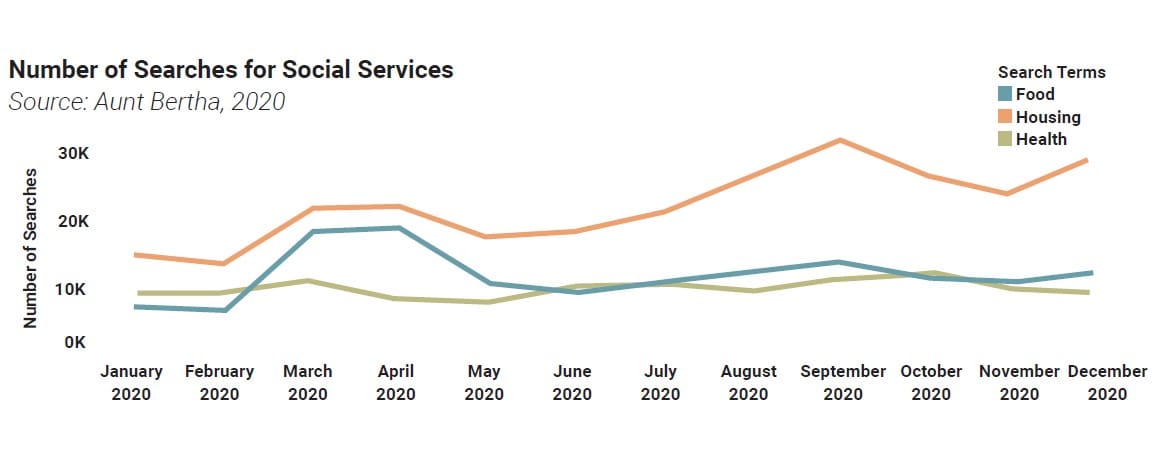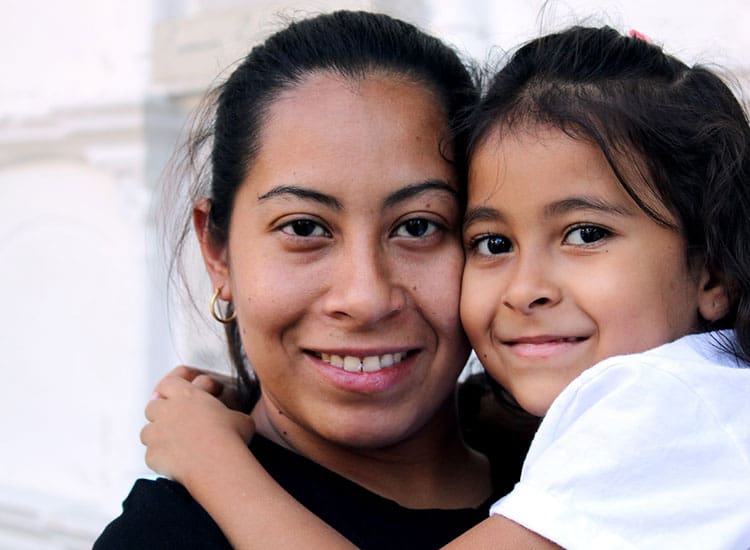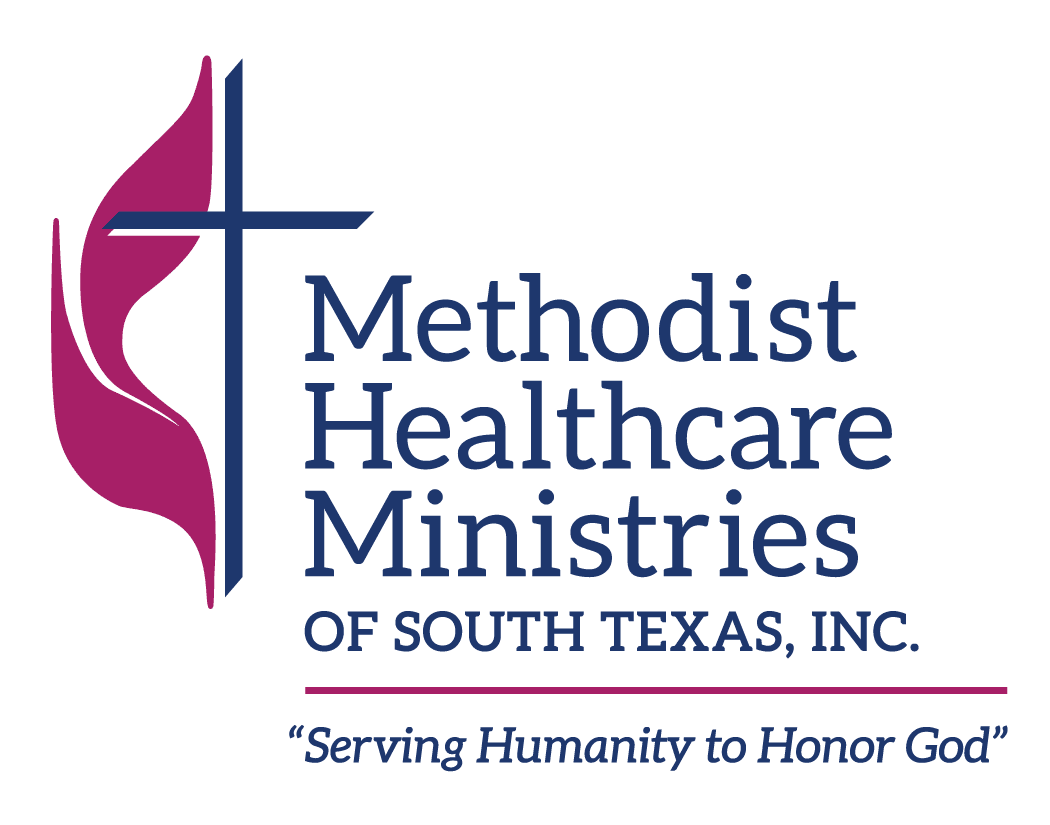[i] Dunkelberg, A. (2020, September 15). New Census Data Show Texas Needs to Expand Health Coverage. Every Texan. https://everytexan.org/wp/2020/09/15/new-census-data-show-texas-needs-to-expand-health-coverage/.
[ii] Murphey, D. (2017, May 12). Health Insurance Coverage Improves Child Well-Being. Child Trends. https://www.childtrends.org/publications/health-insurance-coverage-improves-child-well.
[iii] Snapshot: Covering Texas’ Children. Georgetown University Center for Children and Families . (2018, June 20). https://ccf.georgetown.edu/2018/06/20/state-medicaid-and-chip-snapshots/.
[iv] For more information on Texas children health insurance coverage, see Child and Adolescent Health Measurement Initiative. National Survey of Children’s Health (2016 – present). Data Resource Center for Child and Adolescent Health supported by the U.S. Department of Health and Human Services, Health Resources and Services Administration (HRSA), Maternal and Child Health Bureau (MCHB). https://www.childhealthdata.org/browse/survey?s=2&y=32&r=45
[v] Medicaid and CHIP Monthly Enrollment by Risk Group (September 2014 – July 2020), “ Every Texan Analysis of Texas Health and Human Services, email message from Melissa McChesney to Cheasty Anderson, October 7, 2020
[vi] Park, E., Alker, J. & Corcoran, A. (2020), Jeopardizing a Sound Investment: Why Short-Term Cuts to Medicaid Coverage During Pregnancy and Childhood Could Result in Long-Term Harm (Commonwealth Fund, Dec. 2020). https://doi.org/10.26099/qe16-9f97
[vii] Brooks, T., Park, E., & Roygardner, L. (2019). Medicaid and CHIP enrollment decline suggest the child uninsured rate may rise again. Washington, DC: Center for Children and Families, Health Policy Institute, Georgetown University. https://ccf.georgetown.edu//var/www/stage/everytexan.org/html/wp-content/uploads/2019/05/Medicaid-and-CHIPEnrollment-Decline_Report.pdf
[viii] Gaba, C., & Gee, E. (2020, April 16). How Trump’s Policies Have Hurt ACA Marketplace Enrollment. Center for American Progress. https://www.americanprogress.org/issues/healthcare/news/2020/04/16/483362/trumps-policies-hurt-aca-marketplace-enrollment/.
[ix] For more information on federal level actions that impacts ACA marketplace enrollment, see https://www.americanprogress.org/issues/healthcare/news/2020/04/16/483362/trumps-policies-hurt-aca-marketplace-enrollment/#:~:text=Nationwide%20marketplace%20enrollment%20has%20fallen,(%2D0.3%20percent)%20for%202020.
[x] The Annie E. Casey Foundation. Children in immigrant families who are U.S. citizens in Texas. KIDS COUNT Data Center . https://datacenter.kidscount.org/data/tables/5921-children-in-immigrant-families-who-are-us-citizens?loc=45&loct=2#detailed/2/45/false/37,871,870,573,869,36,868,867,133,38/any/12547,12548
[xi] Anderson, C. (2020, November). Public Charge and Private Dilemmas: Key Challenges and Best Practices for Fighting the Chilling Effect in Texas, 2017-2019. Children’s Defense Fund – Texas. https://cdftexas.org//var/www/stage/everytexan.org/html/wp-content/uploads/sites/8/2020/11/Public-Charge-and-Private-Dilemmas-TX_FINAL-020.pdf.
[xii] The Perryman Group. (2020, December). It Just Makes Sense: Economic and fiscal benefits to Texas of accessing federal funds for health insurance expansion https://www.episcopalhealth.org/research-report/economic-and-fiscal-benefits-to-texas-of-accessing-additional-federal-funds-for-health-insurance-expansion-december-2020/
[xiii] Wright Burak, E., Clark, M., & Roygardner, L. (2019, December). Nation’s Youngest Children Lose Health Coverage at an Alarming Rate. Georgetown University Health Policy Institute Center For Children and Families. https://ccf.georgetown.edu/2019/12/09/nations-youngest-children-lose-health-coverage-at-an-alarming-rate/.
[xiv] Dubay, L., & Kenney, G. (2003). Expanding Public Health Insurance to Parents: Effects on Children’s Coverage under Medicaid. Health Services Research, 38(5), 1283–1302. https://doi.org/10.1111/1475-6773.00177
[xv] For a summary of the economic benefits to Medicaid expansion in Texas, see https://covertexasnow.org/posts/2020/8/10/texas-should-be-the-next-red-state-to-expand-medicaid#:~:text=Here’s%20what%20you%20need%20to,Texas%20adults%20by%20January%202021.&text=Before%20the%20pandemic%20increased%20the,would%20cover%201.5%20million%20Texans.
[xvi] Buettgens, M. (2021). Medicaid expansion would have a larger impact than every during the COVID-19 pandemic. Urban Institute Analysis using the Health Insurance Policy Simulation Model for 2020. https://www.urban.org/research/publication/medicaid-expansion-would-have-larger-impact-ever-during-covid-19-pandemic
[xvii] For detailed information on how Texas can protect enrollment in women’s health programs, see Pogue, S. (2020, September 8). Testimony: Removing barriers to enrollment in Health Texas Women. Every Texan. https://everytexan.org/wp/2020/09/08/testimony-removing-barriers-to-enrollment-in-health-texas-women/.
For more information on proposed benefits staffing cuts and how Texas can increase efficiencies in benefit applications, see McChesney, M. (2020, December 3). Texas Must Improve Medicaid Renewal to Protect Care for Children and New Mothers. Every Texan. https://everytexan.org/wp/2020/12/03/texas-must-improve-medicaid-renewal-to-protect-care-for-children-and-new-mothers/.
[xviii] For more information on the improved economic, health, and educational outcomes of health insurance, see Murphey, D. (2017, May 12). Health Insurance Coverage Improves Child Well-Being. Child Trends. https://www.childtrends.org/publications/health-insurance-coverage-improves-child-well.
[xix] Wright Burak, E. (2018, October 17). Promoting Young Children’s Healthy Development in Medicaid and CHIP. Georgetown University Health Policy Institute Center For Children and Families. https://ccf.georgetown.edu/2018/10/17/promoting-young-childrens-healthy-development-in-medicaid-and-the-childrens-health-insurance-program-chip/.
[xx] Wright Burak, E. (2018, October 17). Promoting Young Children’s Healthy Development in Medicaid and CHIP. Georgetown University Health Policy Institute Center For Children and Families. https://ccf.georgetown.edu/2018/10/17/promoting-young-childrens-healthy-development-in-medicaid-and-the-childrens-health-insurance-program-chip/.
[xxi] L. Murray and P. Cooper, “Effects of postnatal depression on infant development,” Disease in Childhood 77, no. 2 (1997): 99-101 as cited in Wright Burak, E., Clark, M., & Roygardner, L. (2019, December). Nation’s Youngest Children Lose Health Coverage at an Alarming Rate. Georgetown University Health Policy Institute Center For Children and Families. https://ccf.georgetown.edu/2019/12/09/nations-youngest-children-lose-health-coverage-at-an-alarming-rate/.
[xxii] For more information on Texas children’s health measures, see:
Michael & Susan Dell Center for Healthy Living. Texas Child Health Status Report. https://sph.uth.edu/research/centers/dell/texas-child-health-status-report/index.htm
&
Child and Adolescent Health Measurement Initiative. National Survey of Children’s Health (2016 – present). Data Resource Center for Child and Adolescent Health supported by the U.S. Department of Health and Human Services, Health Resources and Services Administration (HRSA), Maternal and Child Health Bureau (MCHB). https://www.childhealthdata.org/browse/survey?s=2&y=32&r=45
[xxiii] Novack, S. (2020, January 22). In Texas, Thousands of Kids Lose Medicaid Coverage Each Month. The Texas Observer. https://www.texasobserver.org/in-texas-thousands-of-kids-lose-medicaid-coverage-each-month/.
[xxiv] American Academy of Pediatrics and Bright Futures, “Recommendations for Preventative Pediatric Health” (Elk Grove, IL: American Academy of Pediatrics, February 2017) as cited in Wright Burak, E. (2018, October 17). Promoting Young Children’s Healthy Development in Medicaid and CHIP. Georgetown University Health Policy Institute Center For Children and Families. https://ccf.georgetown.edu/2018/10/17/promoting-young-childrens-healthy-development-in-medicaid-and-the-childrens-health-insurance-program-chip/.
[xxv] Hadley, J. (2002). Sicker and Poorer: The Consequences of Being Uninsured. Prepared for the Kaiser Commission on Medicaid and the Uninsured. https://www.kff.org/uninsured/report/sicker-and-poorer-the-consequences-of-being/#:~:text=The%20major%20findings%20from%20the,by%2010%2015%20percent%3B%20and
[xxvi] For more information on Texas children’s health needs, see the data dashboard The State of Children’s Health in Texas. Children’s Hospital Association. https://datainsights.childrenshospitals.org/views/PublicPolicyLegislativeInsightDashboard/StateStory?%3Aorigin=card_share_link.
[xxvii] Halterman, J. S., Montes, G., Shone, L. P., & Szilagyi, P. G. (2008). The impact of health insurance gaps on access to care among children with asthma in the United States. Ambulatory Pediatrics, 8(1), 43-49.
[xxviii] Cohodes, S., Grossman, D., Kleiner, S., & Lovenheim, M. F. (2014, October). The Effect of Child Health Insurance Access on Schooling: Evidence from Public Insurance Expansions. Retrieved December 17, 2020, from https://www.nber.org/papers/w20178, as cited in Murphey, D. (2017, May 12). Health Insurance Coverage Improves Child Well-Being. Child Trends. https://www.childtrends.org/publications/health-insurance-coverage-improves-child-well.
[xxix] Murphey, D. (2017, May 12). Health Insurance Coverage Improves Child Well-Being. Child Trends. https://www.childtrends.org/publications/health-insurance-coverage-improves-child-well.
[xxx] Miller, S., & Wherry, L. R. (2019). The long-term effects of early life Medicaid coverage. Journal of Human Resources, 54(3), 785-824.
[xxxi] Murphey, D. (2017, May 12). Health Insurance Coverage Improves Child Well-Being. Child Trends. https://www.childtrends.org/publications/health-insurance-coverage-improves-child-well.
[xxxii] Luca, D. L., Garlow, N., & Staatz, C. (2019, April 29). Societal Costs of Untreated Perinatal Mood and Anxiety Disorders in the United States. Mathematica. https://www.mathematica.org/our-publications-and-findings/publications/societal-costs-of-untreated-perinatal-mood-and-anxiety-disorders-in-the-united-states.
[xxxiii] Boudreaux, M. H., Golberstein, E., & McAlpine, D. D. (2016). The long-term impacts of Medicaid exposure in early childhood: Evidence from the program’s origin. Journal of health economics, 45, 161-17, as cited in Murphey, D. (2017, May 12). Health Insurance Coverage Improves Child Well-Being. Child Trends. https://www.childtrends.org/publications/health-insurance-coverage-improves-child-well.
[xxxiv] For more information on medical debt in households in Texas, see Lewis, J., & Sikes, C. (2019, September). The Mountain of Medical Debt in Texas. Every Texan. https://everytexan.org/wp-content/uploads/2020/03/EO_2019_08_MedicalDebt-1.pdf.
[xxxv] Sommers, B. D. & Oellerich, D. (2013). The poverty-reducing effect of Medicaid. Journal of Health Economics, 32(5), 816-832, as cited in Wagnerman, K., Chester, A., & Alker, J. (2017). Medicaid is a smart investment in children. Georgetown University Health Policy Institute.https://ccf.georgetown.edu//var/www/stage/everytexan.org/html/wp-content/uploads/2017/03/MedicaidSmartInvestment.pdf
[xxxvi] Center on the Developing Child (2007). The Impact of Early Adversity on Child Development (InBrief). https://developingchild.harvard.edu/resources/inbrief-the-impact-of-early-adversity-on-childrens-development/.
[xxxvii] Brown, D. W., Kowalski, A. E., & Lurie, I. Z. (2015). Medicaid as an investment in children: what is the long-term impact on tax receipts? (No. w20835). National Bureau of Economic Research, as cited in Murphey, D. (2017, May 12). Health Insurance Coverage Improves Child Well-Being. Child Trends. https://www.childtrends.org/publications/health-insurance-coverage-improves-child-well.
[xxxviii] For more information on the impact of racial inequities on children, see Schmit, S., Ullrich, R., & Gallagher Robbins, K. (2020, September 3). A Pandemic within a Pandemic: How Coronavirus and Systemic Racism Are Harming Infants and Toddlers of Color. CLASP. https://www.clasp.org/publications/report/brief/pandemic-within-pandemic-how-coronavirus-and-systemic-racism-are-harming.
[xxxix] For more information on Texas health outcomes, needs, and infrastructure by county, particularly around primary care, see Primary Care in Texas. Texas Primary Care Consortium. https://www.txprimarycareconsortium.org/primary-care-in-texas.
[xl] Whitener, K., Lopez, S., Snider, M., & Roygardner, L. (2020, March). Decade of Success for Latino Children’s Health Now in Jeopardy. Georgetown University Health Policy Institute’s Center For Children and Families, Unidos US. https://ccf.georgetown.edu/2020/03/10/decade-of-success-for-latino-childrens-health-now-in-jeopardy/.
[xli] Whitener, K., Lopez, S., Snider, M., & Roygardner, L. (2020, March). Decade of Success for Latino Children’s Health Now in Jeopardy. Georgetown University Health Policy Institute’s Center For Children and Families, Unidos US. https://ccf.georgetown.edu/2020/03/10/decade-of-success-for-latino-childrens-health-now-in-jeopardy/.
[xlii] For more information on the composition of Texas’ essential worker labor force, see Ibarra, M. (2020, April 21). Essential Workers Deserve More Than Praise. Every Texan. https://everytexan.org/wp/2020/04/21/essential-workers-deserve-more-than-praise/.
[xliii] Elise Gould and Jessica Schieder. (2017). Work Sick or Lose Pay? The High Cost of Being Sick When You Don’t Get Paid Sick Days, Economic Policy Institute, https://www.epi.org/publication/work-sick-or-lose-pay-thehigh-cost-of-being-sick-when-you-dont-get-paid-sick-days/;
[xliv] Artiga, S., Rudowitz, R., & Tolbert, J. (2016, March 2). Outreach and Enrollment Strategies for Reaching the Medicaid Eligible but Uninsured Population. KFF. https://www.kff.org/medicaid/issue-brief/outreach-and-enrollment-strategies-for-reaching-the-medicaid-eligible-but-uninsured-population/.
[xlv] Alvira-Hammond, M., & Gennetian, L. A. (2015, December 7). How Hispanic Parents Perceive Their Need and Eligibility for Public Assistance. National Research Center on Hispanic Children & Families. https://www.hispanicresearchcenter.org/research-resources/how-hispanic-parents-perceive-their-need-and-eligibility-for-public-assistance/.
[xlvi] Kennedy, K. (2018, January 21). Deportation fears have legal immigrants avoiding health care. AP News. https://apnews.com/article/9f893855e49143baad9c96816ec8f731.
[xlvii] Texas Workforce Commission. (2021). Unemployment Claims by Numbers. https://www.twc.texas.gov/news/unemployment-claims-numbers#claimsByCounty
[xlviii] Novak, A., & Ferman, M. (2020, December 17). Texas unemployment rate: How coronavirus is hitting the economy. The Texas Tribune. https://apps.texastribune.org/features/2020/texas-unemployment/?_ga=2.195451500.1190019518.1600022011-1386683482.1502712517.
[xlix] Schmit, S., Ullrich, R., & Gallagher Robbins, K. (2020, September 3). A Pandemic within a Pandemic: How Coronavirus and Systemic Racism Are Harming Infants and Toddlers of Color. CLASP. https://www.clasp.org/publications/report/brief/pandemic-within-pandemic-how-coronavirus-and-systemic-racism-are-harming
[l] DeSilver, D. (2020, March 16). No U.S. industry employs mostly immigrant workers. Pew Research Center. https://www.pewresearch.org/fact-tank/2017/03/16/immigrants-dont-make-up-a-majority-of-workers-in-any-u-s-industry/.
[li] Goldman, T. L., Gupta, P., & Hernandez, E. (2018, May 29). The Struggles of Low-Wage Work. CLASP. https://www.clasp.org/publications/fact-sheet/struggles-low-wage-work.
[lii] Kuchment, A. et al. (2020). COVID’s ‘untold story’: Texas Blacks and Latinos are dying in the prime of their lives. The Dallas Morning News, December 19, 2020. https://www.dallasnews.com/news/2020/12/19/covids-untold-story-texas-blacks-and-latinos-are-dying-in-the-prime-of-their-lives/
[liii] U.S. Census Bureau, Household Pulse Survey, Week of 11/11/2020 – 11/23/2020, as cited in Adults Reporting Symptoms of Anxiety or Depressive Disorder During COVID-19 Pandemic. KFF. https://www.kff.org/other/state-indicator/adults-reporting-symptoms-of-anxiety-or-depressive-disorder-during-covid-19-pandemic/?currentTimeframe=0.
[liv] U.S. Census Bureau, Household Pulse Survey, Week of 10/28/2020 – 11/09/2020, as cited in Unmet Need for Counseling or Therapy Among Adults Reporting Symptoms of Anxiety and/or Depressive Disorder During the COVID-19 Pandemic. KFF. https://www.kff.org/other/state-indicator/unmet-need-for-counseling-or-therapy-among-adults-reporting-symptoms-of-anxiety-and-or-depressive-disorder-during-the-covid-19-pandemic/?currentTimeframe=0&selectedRows=%7B%22states%22:%7B%22texas%22:%7B%7D%7D%7D&sortModel=%7B%22colId%22:%22Location%22,%22sort%22:%22asc%22%7D.
[lv] For more information on the impacts of COVID on child mental health, see Bartlett, J. D., Griffin, J., & Thomson, D. (2020, March 19). Resources for Supporting Children’s Emotional Well-being during the COVID-19 Pandemic. Child Trends, Child Trauma Training Center at the University of Massachusetts. https://www.childtrends.org/publications/resources-for-supporting-childrens-emotional-well-being-during-the-covid-19-pandemic.
[lvi] Marketplace coverage & Coronavirus. (2020). HealthCare.gov. Retrieved December 2020. https://www.healthcare.gov/coronavirus/
[lvii] Claxton, G., Levitt, L., Garfield, R., & Damico, A. (2020, May 13). Eligibility for ACA Health Coverage Following Job Loss. KFF. https://www.kff.org/coronavirus-covid-19/issue-brief/eligibility-for-aca-health-coverage-following-job-loss/.
[lviii] Claxton, G., Levitt, L., Garfield, R., & Damico, A. (2020, May 13). Eligibility for ACA Health Coverage Following Job Loss. KFF. https://www.kff.org/coronavirus-covid-19/issue-brief/eligibility-for-aca-health-coverage-following-job-loss/.
[lix] Pollitz, K., Tolbert, J., Hamel, L., & Kearney, A. (2020, August 7). Consumer Assistance in Health Insurance: Evidence of Impact and Unmet Need – Issue Brief. KFF. https://www.kff.org/report-section/consumer-assistance-in-health-insurance-evidence-of-impact-and-unmet-need-issue-brief/.
[lx] Pollitz, K., & Tolbert, J. (2020, October 13). Data Note: Limited Navigator Funding for Federal Marketplace States. KFF. https://www.kff.org/health-reform/issue-brief/data-note-further-reductions-in-navigator-funding-for-federal-marketplace-states/.
[lxi] Several Texas organizations, including Every Texan, have launched a new #SickOfItTX campaign to ensure that health coverage for all is a top priority issue for state legislators in 2021. For more information, see https://sickofittx.com/.


